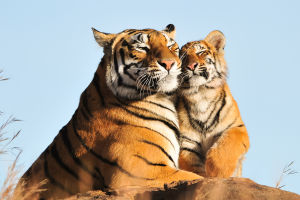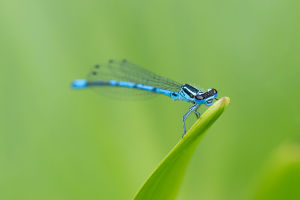The Northern Goshawk (Accipiter gentilis) is a remarkable bird of prey, known for its agility, strength, and striking appearance.
Belonging to the Accipitridae family, which includes other raptors like eagles and hawks, the Goshawk is a master of the forest, navigating through dense woodlands with ease.
Let's delve into the fascinating world of the Goshawk, exploring its physical characteristics, habitat, hunting techniques, and conservation status.
Physical Characteristics
Goshawks are medium to large-sized raptors, with females being significantly larger than males. This sexual dimorphism is common among birds of prey. Adult Goshawks typically measure between 20 to 26 inches in length, with a wingspan ranging from 40 to 46 inches. They weigh between 1.5 to 3.3 pounds, with females being at the upper end of the scale.
Their plumage is a mix of slate gray and white, with the underparts finely barred with gray. Juveniles, however, have brown plumage with streaked underparts. One of the most striking features of the Goshawk is its piercing red or orange eyes, which become more vivid as the bird matures. These eyes, coupled with a pronounced white eyebrow stripe, give the Goshawk a fierce and determined look.
Habitat and Distribution
Goshawks are found across the Northern Hemisphere, inhabiting temperate and boreal forests. Their range extends from North America and Europe to Asia. They prefer large, mature forests with dense canopies that provide ample cover and nesting sites. These birds are highly territorial, often returning to the same nesting sites year after year.
In North America, the Goshawk’s range extends from Alaska and Canada down to the mountainous regions of the United States, including the Rocky Mountains and the Appalachians. In Europe, they are widespread, from Scandinavia to the Mediterranean, and in Asia, their range includes Siberia, Japan, and parts of China.
Hunting Techniques and Diet
Goshawks are formidable hunters, known for their speed and agility. They primarily hunt birds and small mammals, employing a range of hunting techniques. Their powerful legs and talons enable them to catch and kill prey with remarkable efficiency.
One common hunting method is to perch silently and watch for prey, then launch a rapid pursuit through the trees. They are also known to use surprise attacks, flying low and fast through the forest to ambush their prey. Goshawks have been observed chasing birds in flight, catching them mid-air with their sharp talons.
Their diet is diverse and includes birds like grouse, pigeons, and songbirds, as well as mammals such as squirrels, rabbits, and hares. In some regions, they also prey on reptiles and insects. The Goshawk’s adaptability in hunting various prey items makes it a versatile predator.
Breeding and Nesting
The breeding season for Goshawks typically begins in early spring. They build large nests made of sticks and lined with bark, leaves, and feathers. These nests are usually located high in the trees, providing safety from ground predators. Both the male and female participate in nest building, although the female takes on the primary role of incubating the eggs and caring for the young.
A typical clutch consists of 2 to 4 eggs, which are incubated for about 35 to 38 days. The chicks are altricial, meaning they are born helpless and require significant parental care. They fledge around 40 to 50 days after hatching but remain dependent on their parents for several more weeks as they learn to hunt and fend for themselves.
Conservation Status
The Northern Goshawk is currently listed as a species of Least Concern by the International Union for Conservation of Nature (IUCN). However, their populations are subject to various pressures, including habitat loss, illegal hunting, and human disturbance. In some regions, particularly in Europe, Goshawks have been persecuted by gamekeepers and pigeon fanciers who view them as threats to game birds and racing pigeons.
Conservation efforts are focused on protecting their habitats, enforcing legal protections, and promoting public awareness. In North America, Goshawks are protected under the Migratory Bird Treaty Act, which helps safeguard their populations from hunting and harassment.
The Goshawk is a symbol of power and grace in the avian world. Its adaptability, hunting prowess, and striking appearance make it a fascinating subject of study and admiration. As top predators, Goshawks play a crucial role in maintaining the balance of their ecosystems. Ensuring their conservation and protection is essential for preserving the health and diversity of forest habitats across the Northern Hemisphere.


